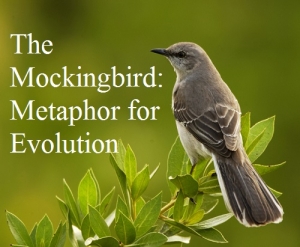It’s time. Don’t wait until the week or the day before school starts to get children and teens back on schedule. Three weeks should do it. Here is how to get into the back-to- school routine.
New Routine. Ease out of your summer schedule and back into school hours gradually by getting to bed earlier by 10 minutes and waking up 10 minutes earlier. Adults need to get on the new schedule too. Teenagers will want to stay up late and sleep in until the day before school starts. That won’t work. The human body needs time to adjust. By the end of two weeks the whole family should be on the new schedule and ready to go back to school. During the last week the whole family should no longer be up at the new time lounging around in pajamas watching TV. For the last seven days everyone should be up, dressed, eating breakfast on school time, and going outside at the time they will leave for school. Meals and snacks should be served on the new schedule. Younger children especially need to adjust to the school mealtimes.
REMINDERS. Breakfast should include protein, fat and carbohydrates. Suggestions include whole-grain cereal or oatmeal, whole-wheat toast, milk, yogurt, peanut butter, eggs, cheese and fruit. Children and teens need the following hours of sleep: Ages 1-3 need 12-14 hours; 3-6 need 10-12 hours; 7-12 need 10-11 hours; 12-18 need 8-9 hours. Breakfast and adequate sleep affect cognitive function. Remind children that eating and sleeping fuel the brain.
Shopping. First, take an inventory. Who needs shoes? Jeans? Backpack? Back-to- school shopping is a “teaching” moment. Explain that the family will have to stick to a budget. Have children make lists of what they will need. Take stock of hand-me- downs from the older children. School websites usually post lists of supplies students will need. Search online for coupons and sales. Involving your children in planning and budgeting will head off tantrums once you get to the store. You will also be modeling valuable behavior for how to evaluate needs (not wants), working together, and compromising to satisfy the budget.
Message Center. Set up a message board where family news and plans are posted. Somewhere in or near the kitchen is ideal. Post a master calendar, school lunch menus, important dates from the school calendar, extra-curricular events and family events like birthdays.
Math Review. The budget and shopping will serve as a review of basic arithmetic, especially if you have children write down the amount of their personal budget. They can look up prices online and add up the cost of items on their list.
Reading Practice. Take your children to the library for three weeks of reading material of their own selection. If children don’t read at all during their summer break, they lose some of the skills they learned the year before. Reading for three weeks before school starts will better prepare them for the next grade.
Back-to-school boot camp will make a huge difference in children’s moods and attitudes. Preparation is key to maximizing performance. It will also reduce anxiety and develop confidence in students. Parents are the most important teachers in children’s lives. The back-to-school routine will teach children how to empower themselves, how to take action and get in gear for new experiences and challenges. Staging a formal back-to- school process will reinforce the self-discipline they will need to perform well through high school, college and beyond. How do you get ready for school or work? You organize and prepare.
Yes you can start a sentence with so, but try to avoid saying, “So . . . you can start a sentence with so.” The introductory so is a verbal virus like well, um and like. It's not incorrect but it sure can be annoying. It's nerdspeak that started in Silicon Valley years ago and has since spread across the country. In TV interviews Facebook founder Mark Zuckerberg begins almost every sentence with so, as does Federal Reserve Chair Janet Yellen. Economists, scientists, engineers, and computer experts who attempt to translate complex information into layman's terms often signal the translation with “So . . .”
Not every introductory so is annoying. We all say things like, “So how was your vacation?” or “So have you decided on a college?” When Zuckerberg and Yellen start sentences with so, the usage is non-viral. When the introductory so creeps into everyday usage by ordinary people, that’s a virus, a speech habit that sounds condescending. If someone talks down to us, the tone makes us feel so-so, especially when that so-and-so intentionally assumes a superior attitude. So lose the so.
The other Bronte sister Anne, little sister of Charlotte (author of Jane Eyre) and Emily (author of Wuthering Heights), was a novelist too. Anne Bronte wrote under the pseudonym Acton Bell. Her second novel The Tenant of Wildfell Hall (1848) is the new pick for the Wall Street Journal’s WSJ Book Club.
The early feminist work tells the story of a woman married to an abusive husband who parties with a wild crowd. She runs away, settles with her child in another town, tries to survive in a hostile social environment, and in the end falls in love with a local farmer.
When first published the book was widely read because it was considered scandalous. After Anne died at the age of 29, her sister Charlotte pre-vented Wildfell Hall from ever being published again.
Two themes made Wildfell Hall scandalous. First there was the legal question. In 1848 English women could not own property, enter into contracts, sue for divorce or win custody of their children. Not until the Married Women’s Property Act of 1870 could women in England live independently if they no longer wanted to be married.
The second scandalous theme was decadence and moral decay of both men and women. Anne got away with describing wild parties, alcohol, drugs, and adulterous affairs because she wrote under a man’s name.
Life on the Mississippi by Mark Twain is the Wall Street Journal’s WSJ Book Club selection of the month. It’s the first non-fiction choice by the 2-year-old book club that let’s guest author’s select titles. The author then guides readers via the club’s Facebook page, providing commentary and answering questions. Guest author and historian Adam Hochschild calls Life on the Mississippi “one of the greatest non-fiction works ever.”
Why is Twain’s travelogue so important? Hochschild points out that Life on the Mississippi is one of the few books about work. Twain goes into detail about the actual job of steamboat pilot as the book describes voyages on the Mississippi River from New Orleans to Minnesota. Hochschild adds: “When you are writing about an extraordinary, fascinating profession at the peak of its glory, you don’t have to make things up.”
The Mockingbird: Metaphor for Evolution. Charles Darwin couldn’t figure out why mockingbirds in the Galapagos Islands differed on each island and on the South American mainland. Back in England a year after the voyage of the HMS Beagle in 1835, Darwin was going over his notes. His data contradicted accepted scientific doctrine that species could not change. Then, EUREKA! Darwin realized he was in new scientific territory. The mockingbird, along with Galapagos tortoises, were the proof that species evolved.
In Harper Lee’s To Kill a Mockingbird, Atticus Finch warns his children not to kill a mockingbird. The songbird serves as a metaphor for innocence – the innocence of Tom Robinson and Boo Radley. In light of its scientific importance, the mockingbird expands the metaphor to symbolize evolution. Prejudice is not a permanent human trait. Change is possible, including moral and cultural change. People – even racists and bigots – can evolve.




